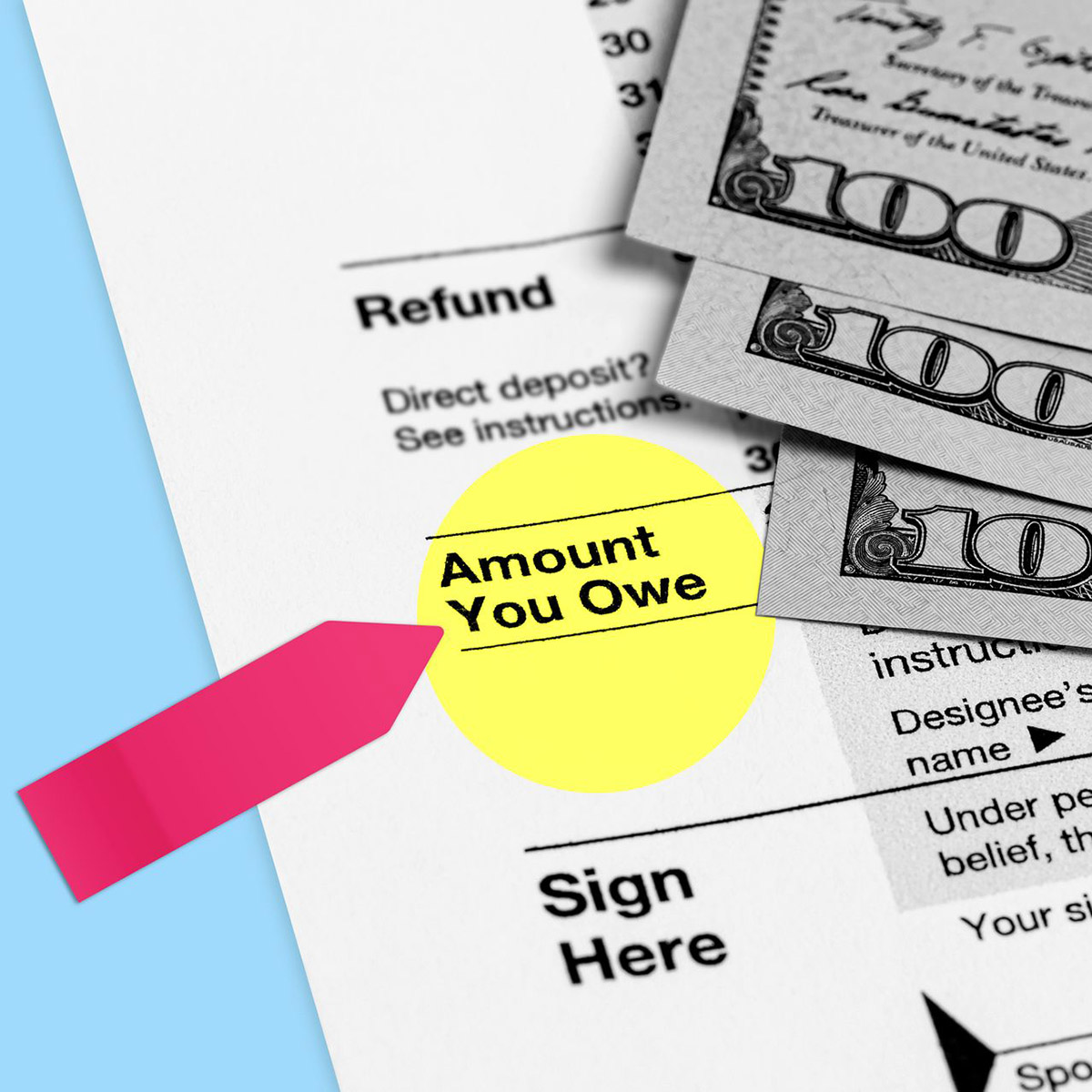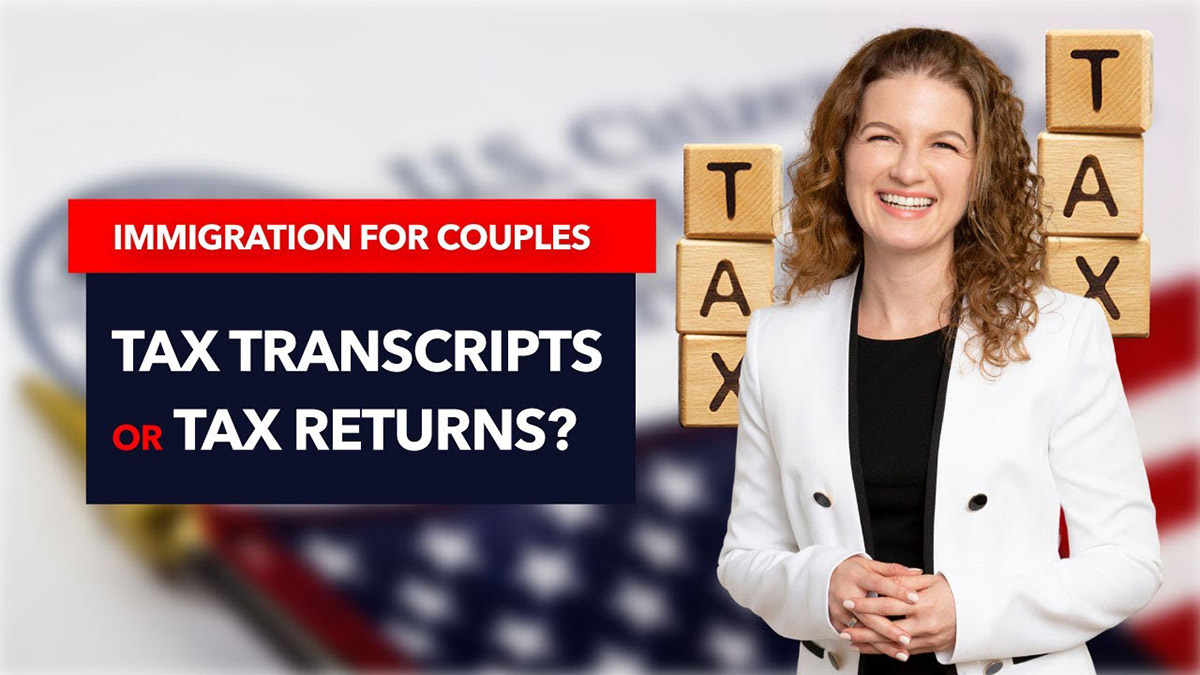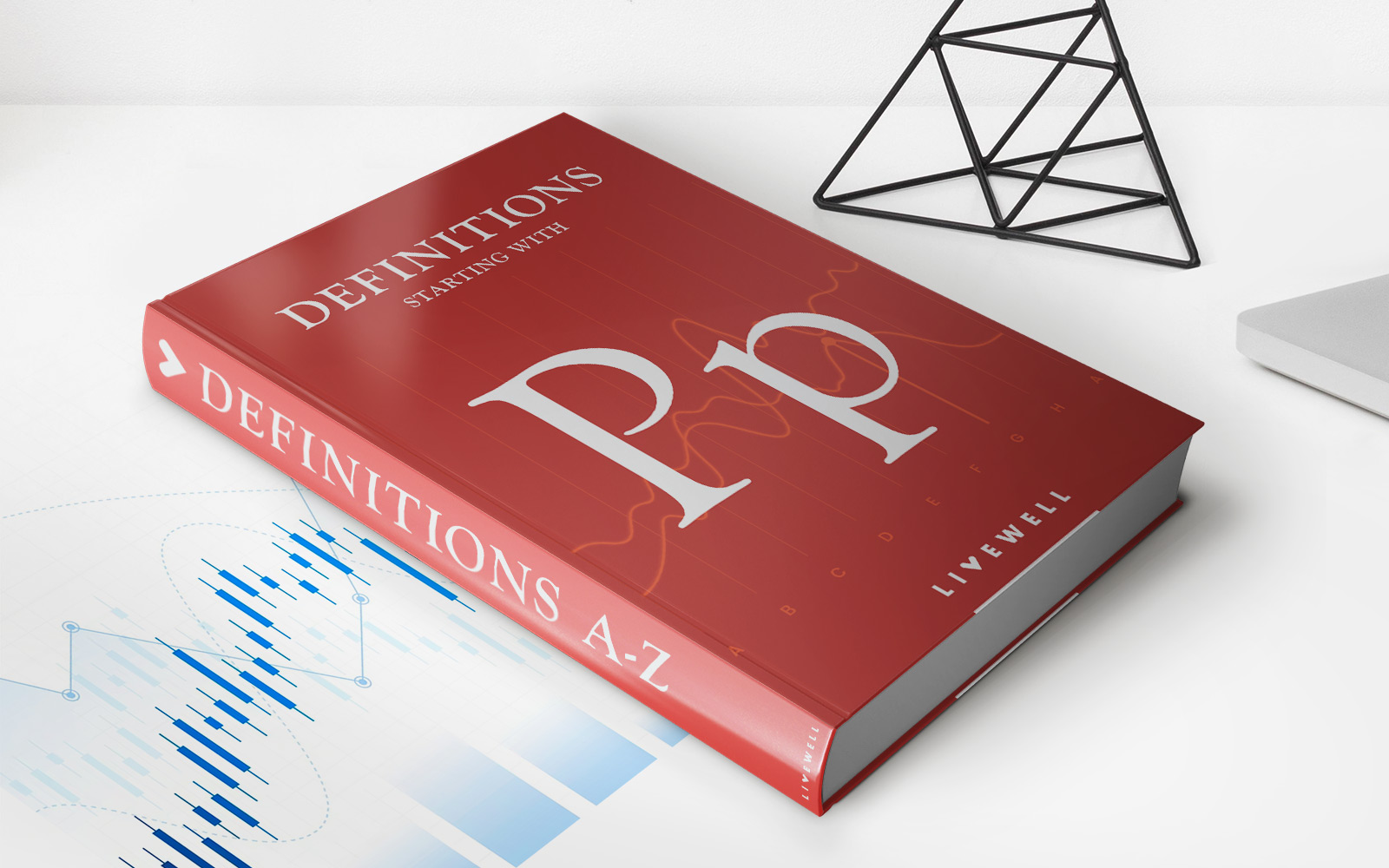

Finance
What Is DFC On A Tax Return?
Modified: February 21, 2024
Learn about DFC on a tax return and how it affects your finances. Understand the implications and benefits of this tax term.
(Many of the links in this article redirect to a specific reviewed product. Your purchase of these products through affiliate links helps to generate commission for LiveWell, at no extra cost. Learn more)
Table of Contents
Introduction
When it comes to filing taxes, there are numerous terms and acronyms that can confuse even the most financially savvy individuals. One such term is DFC, an abbreviation that stands for “Dependent Care FSA” or “Dependent Care Flexible Spending Account.” Understanding what DFC means and its significance on a tax return is crucial for individuals who have dependents and incur child or dependent care expenses.
A DFC is a type of savings account offered by employers that allows employees to set aside a portion of their pre-tax earnings for child or dependent care expenses. These expenses can include daycare, in-home care, preschool, before and after-school programs, and summer camps for children under the age of 13, as well as care for elderly or disabled dependents. The funds allocated to the DFC can be used to cover these expenses and are exempt from federal income tax, Social Security tax, or Medicare tax.
For many individuals, child or dependent care expenses can be a significant financial burden. The availability of a DFC can help alleviate some of the financial strain by providing a tax-advantaged way to save for these expenses. By understanding how DFC works and its implications on a tax return, individuals can make informed decisions about their dependent care expenses and potentially reduce their tax liability.
Definition of DFC
A Dependent Care FSA, or DFC for short, is a type of employee benefit offered by some employers that allows employees to set aside pre-tax dollars to cover eligible child or dependent care expenses. This account operates similarly to a traditional Flexible Spending Account (FSA) and is designed to help individuals save money on taxes while providing financial support for their dependent care needs.
The primary purpose of a DFC is to provide tax advantages for individuals who have child or dependent care expenses. By contributing a portion of their pre-tax earnings to a DFC, employees can reduce their taxable income, resulting in lower overall tax liability. This means that the funds set aside in a DFC are exempt from federal income tax, Social Security tax, and Medicare tax. In other words, individuals can use these pre-tax dollars to pay for child or dependent care expenses, effectively reducing their out-of-pocket costs.
It’s important to note that the term “Dependent Care FSA” may be used interchangeably with other names, such as “Dependent Care Assistance Program” (DCAP) or “Dependent Care Reimbursement Account” (DCRA). Regardless of the terminology, the purpose and functionality remain the same: to provide tax savings and financial assistance for eligible child or dependent care expenses.
Eligible child or dependent care expenses can include a variety of services and providers, such as daycare centers, in-home care providers, preschools, before and after-school programs, and summer camps. Additionally, expenses related to care for elderly or disabled dependents may also be eligible. However, it’s important to consult the specific guidelines and restrictions set by the employer’s DFC plan to determine which expenses qualify for reimbursement.
Purpose of DFC on a Tax Return
The inclusion of a Dependent Care FSA (DFC) on a tax return serves several important purposes. Firstly, it allows individuals to reduce their taxable income by contributing a portion of their earnings to a DFC account. By doing so, individuals can potentially lower their overall tax liability, resulting in tax savings.
Secondly, the purpose of reporting DFC on a tax return is to provide documentation and evidence of eligible child or dependent care expenses. When filing taxes, individuals must provide details regarding the amount of money contributed to their DFC account and the corresponding expenses incurred. This information helps the Internal Revenue Service (IRS) determine if the expenses meet the necessary criteria for tax advantages.
By accurately reporting DFC contributions and eligible expenses on a tax return, individuals can potentially benefit from valuable tax deductions or credits. This can result in significant savings, allowing individuals to allocate more resources towards the care of their dependents.
It’s important to note that DFC contributions and expenses must comply with specific IRS guidelines, including maximum contribution limits and eligible expense criteria. Employers typically provide information regarding these guidelines and may offer resources or assistance to employees when reporting DFC on their tax returns.
Overall, the purpose of including DFC on a tax return is to provide individuals with potential tax savings and financial relief for their child or dependent care expenses. By strategically utilizing this benefit and accurately reporting it on their tax return, individuals can optimize their tax outcomes and effectively manage their financial responsibilities.
Determining DFC Eligibility
Determining eligibility for a Dependent Care FSA (DFC) requires understanding the specific guidelines and criteria set by the employer’s plan and the Internal Revenue Service (IRS). In general, to be eligible for a DFC, individuals must meet certain requirements related to their dependent care expenses and employment status.
1. Employment Requirements: To participate in a DFC, individuals must be employed by a company that offers this benefit. The employer determines eligibility and sets specific rules and contribution limits for the DFC plan. Individuals should review their employer’s plan documents or consult with their human resources department to understand the eligibility criteria.
2. Child or Dependent Care Expenses: Eligible child or dependent care expenses include costs incurred for the care of children under the age of 13, as well as expenses related to the care of elderly or disabled dependents. These expenses must be necessary for individuals to work or attend school and allow individuals to earn income.
3. Dependent Relationship: To qualify for the DFC, individuals must have dependents who meet certain relationship criteria. This typically includes children who are legally recognized as dependents and share a parent-child relationship. Additionally, spouses or other qualifying dependents, such as elderly or disabled family members, may also be eligible.
4. Tax Filing Status: Individuals must file their taxes jointly or, if married, file separately but live apart from their spouse. The DFC cannot be used if individuals file as “Married Filing Separately” and live with their spouse.
It’s important to remember that the IRS imposes specific maximum contribution limits for DFC accounts. These limits are adjusted annually and vary depending on whether an individual is married, filing jointly, or filing separately. Individuals should ensure their contributions do not exceed the allowable limit to avoid potential tax penalties.
Employers typically require individuals to reconfirm their DFC eligibility on an annual basis during the open enrollment period. It’s important to review and understand the plan details each year to determine eligibility and take advantage of any changes or updates.
By understanding and meeting the eligibility requirements for a DFC, individuals can utilize this benefit to save money on eligible child or dependent care expenses and potentially reduce their tax liability.
Calculation of DFC
The calculation of a Dependent Care FSA (DFC) contribution is based on the individual’s anticipated eligible child or dependent care expenses for the year. The Internal Revenue Service (IRS) imposes specific maximum contribution limits for DFC accounts, and individuals should carefully calculate their expected expenses to determine an appropriate contribution amount.
When calculating the DFC, individuals should consider the following factors:
1. Maximum Contribution Limit: The IRS sets a maximum contribution limit for DFC accounts each year. As of 2021, the maximum allowed annual contribution is $5,000 for individuals or married couples filing jointly, and $2,500 for married couples filing separately.
2. Eligible Expenses: Individuals should estimate their anticipated eligible child or dependent care expenses for the year. These expenses can include daycare, preschool, before and after-school programs, in-home care, summer camps, and care for elderly or disabled dependents. It’s important to note that expenses must be necessary for individuals to work or attend school.
3. Employment Status: The amount individuals contribute to the DFC is based on their annual salary and employment status. Contributions are typically deducted from the individual’s paycheck on a pre-tax basis, reducing their taxable income and potentially lowering their tax liability.
For example, if an individual’s anticipated eligible child or dependent care expenses for the year amount to $4,000, they can contribute up to that amount to their DFC. By contributing the full amount, they can potentially save on federal income tax, Social Security tax, and Medicare tax based on their tax bracket.
It’s important to carefully consider the projected expenses and contribute an amount that ensures the funds within the DFC will be fully utilized. Any funds left unused within the DFC account at the end of the plan year may be forfeited according to the employer’s plan rules.
Individuals should also keep in mind that changes in employment status, such as a salary increase, decrease, or job change, can affect the DFC calculation. It’s advisable to review DFC contributions annually during the employer’s open enrollment period and make adjustments as necessary to align with anticipated eligible expenses and any changes in income.
By accurately calculating the DFC, individuals can ensure they are contributing an appropriate amount to cover their child or dependent care expenses while maximizing the tax advantages of this benefit.
Reporting DFC on a Tax Return
Reporting a Dependent Care FSA (DFC) on a tax return requires individuals to provide accurate information and documentation regarding their contributions and eligible child or dependent care expenses. It’s essential to understand the specific guidelines set by the Internal Revenue Service (IRS) to ensure compliance and maximize tax benefits.
When reporting DFC on a tax return, individuals should follow these steps:
1. Form 2441: Individuals must complete Form 2441, titled “Child and Dependent Care Expenses,” which is attached to their federal income tax return (such as Form 1040). This form is used to report eligible care expenses and calculate any potential tax credits or deductions related to the DFC.
2. DFC Contributions: Report the total amount contributed to the DFC during the tax year on Form 2441. This includes any pre-tax contributions made by the individual through payroll deductions. The DFC contributions are subtracted from the individual’s taxable income, reducing their overall tax liability.
3. Qualified Care Expenses: List the total eligible child or dependent care expenses incurred during the tax year on Form 2441. This includes expenses related to daycare, in-home care, preschool, before and after-school programs, summer camps, and care for elderly or disabled dependents. The expenses must be necessary for individuals to work or attend school.
4. Dependent Information: Provide the necessary information about the dependents for whom the care expenses were incurred, including their names, Social Security numbers, and relationship to the taxpayer.
5. Calculation of Credits or Deductions: Use the information provided on Form 2441 to calculate any applicable tax credits or deductions related to the DFC. The IRS offers the Child and Dependent Care Tax Credit, which provides a credit based on a percentage of the total eligible expenses, up to certain limits.
It’s important to retain documentation, such as receipts and invoices, that support the reported child or dependent care expenses. While the IRS does not require individuals to submit these documents with their tax return, it’s advisable to keep them on file in case of an audit or verification request.
Individuals should review the IRS guidelines and consult with a tax professional if needed when reporting DFC on their tax return. Employers may also provide resources or assistance in understanding how to report DFC accurately.
By properly reporting DFC on a tax return, individuals can ensure compliance with IRS regulations and potentially benefit from valuable tax credits or deductions, resulting in reduced tax liability and increased savings.
Potential Benefits of DFC
A Dependent Care FSA (DFC) offers a range of potential benefits for individuals who have child or dependent care expenses. Understanding these benefits can help individuals make informed decisions about utilizing this employee benefit and optimizing their financial situation.
1. Tax Savings: One of the primary benefits of a DFC is the potential for tax savings. By contributing pre-tax dollars to the DFC, individuals can lower their taxable income, which may result in a decreased tax liability. This tax advantage can provide significant savings, allowing individuals to allocate more resources towards the care of their dependents.
2. Reduced Out-of-Pocket Expenses: Utilizing a DFC can help individuals manage their child or dependent care expenses more effectively by using pre-tax dollars. This means that expenses covered by the DFC are paid with income that has not been subjected to federal income tax, Social Security tax, or Medicare tax. As a result, out-of-pocket expenses for eligible child or dependent care can be effectively reduced.
3. Flexibility and Convenience: A DFC provides individuals with flexibility in managing their dependent care expenses. Funds in the DFC can be used for a variety of eligible child or dependent care services, such as daycare, preschool, in-home care, before and after-school programs, summer camps, and care for elderly or disabled dependents. This allows individuals to choose the care that best meets the needs of their unique situation.
4. Financial Planning Benefits: By contributing to a DFC, individuals can engage in proactive financial planning for their child or dependent care expenses. The ability to set aside pre-tax dollars throughout the year provides a dedicated savings account that can be used when needed. This can help individuals achieve a better balance between their income and expenses and potentially avoid financial strain related to dependent care.
5. Employer Contributions: Some employers may offer additional benefits, such as employer matching contributions or other financial incentives, to encourage employees to participate in the DFC. These contributions can further enhance the financial advantages of the DFC and provide an additional source of funding for child or dependent care expenses.
6. Peace of Mind: Knowing that there is a dedicated account to cover child or dependent care expenses can provide individuals with peace of mind. The DFC allows for predictable and consistent funding for these expenses, reducing the financial stress associated with managing and budgeting for these costs.
It’s important for individuals to review their specific DFC plan details and consult with their employer or tax advisor to fully understand the potential benefits available to them. By taking full advantage of the DFC, individuals can experience increased financial flexibility, reduced tax liability, and improved peace of mind when it comes to managing their child or dependent care obligations.
Drawbacks of DFC on a Tax Return
While a Dependent Care FSA (DFC) provides numerous benefits, it’s important to be aware of potential drawbacks that individuals may encounter when utilizing this employee benefit on their tax return.
1. Use-It-or-Lose-It Rule: One common drawback of the DFC is the “use-it-or-lose-it” rule. This means that any funds remaining in the DFC at the end of the plan year may be forfeited. Individuals must carefully estimate their eligible child or dependent care expenses to avoid contributing more than they can use within the specified timeframe. Failure to utilize all the funds can result in losing the money contributed to the DFC.
2. Limited Eligible Expenses: While the DFC covers a wide range of eligible child or dependent care expenses, there are limitations. Certain expenses, such as overnight camps, transportation costs, and educational expenses, may not be considered eligible. It’s important to review the specific guidelines of the DFC plan to understand which expenses qualify for reimbursement.
3. Restricted Contribution Limits: The IRS imposes maximum contribution limits for DFC accounts. These limits can vary depending on the individual’s filing status, and exceeding these limits can result in tax penalties. Individuals must carefully calculate their anticipated eligible expenses and contribute an appropriate amount to stay within the allowable contribution limits.
4. Tax Implications if Eligibility Changes: If an individual’s eligibility for the DFC changes during the plan year, such as a job change or a change in marital status, the tax implications need to be considered. In some cases, individuals may need to adjust their contributions or eligibility status, which can impact their tax situation and potential tax benefits related to the DFC.
5. Administrative Complexity: The administration of a DFC can involve paperwork and record-keeping responsibilities. Individuals are required to accurately report their DFC contributions and eligible expenses on their tax return. This may require gathering and organizing receipts, invoices, and other supporting documentation. Failure to properly document and report DFC transactions can result in complications during tax filing.
6. Not Compatible with Child and Dependent Care Tax Credit: It’s essential to remember that while the DFC can provide tax advantages, it cannot be used in conjunction with the Child and Dependent Care Tax Credit. Individuals must determine which option provides the most beneficial tax outcome and choose accordingly.
Despite these drawbacks, many individuals find that the benefits of the DFC outweigh the potential disadvantages. It’s crucial to carefully consider these drawbacks and weigh them against the potential tax savings and financial convenience provided by the DFC.
Conclusion
Understanding the Dependent Care FSA (DFC) and its implications on a tax return is essential for individuals who have child or dependent care expenses. The DFC offers numerous benefits, including potential tax savings, reduced out-of-pocket expenses, flexibility in managing dependent care, and peace of mind. By utilizing the DFC wisely, individuals can optimize their financial situation and effectively manage their child or dependent care obligations.
However, it’s important to be aware of potential drawbacks, such as the use-it-or-lose-it rule, limited eligible expenses, and administrative complexity. Individuals should carefully consider these drawbacks and plan accordingly to avoid any potential negative consequences.
When reporting the DFC on a tax return, individuals must accurately document and report their contributions and eligible expenses. Following IRS guidelines and consulting with a tax professional can ensure compliance and maximize the available tax benefits.
Ultimately, the DFC provides individuals with a tax-advantaged way to save for child or dependent care expenses. By strategically utilizing this benefit, individuals can reduce their tax liability, increase their financial flexibility, and alleviate some of the financial strain associated with dependent care.
It’s important for individuals to thoroughly review their employer’s DFC plan details, including contribution limits and eligible expenses, to make informed decisions. Regular reassessment of expense estimates and adjustments to DFC contributions can help individuals align their contributions with their projected expenses.
In conclusion, the Dependent Care FSA is a valuable tool for individuals with child or dependent care responsibilities. By understanding its purpose, eligibility requirements, calculations, reporting procedures, and potential benefits and drawbacks, individuals can make informed choices that maximize the advantages of the DFC while effectively managing their financial responsibilities and obligations.














